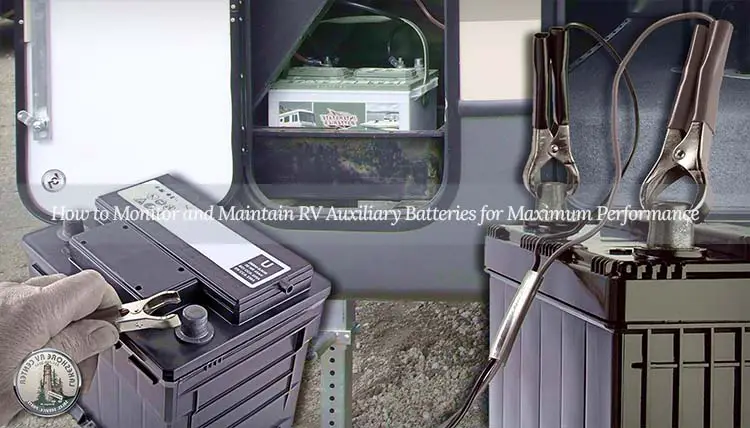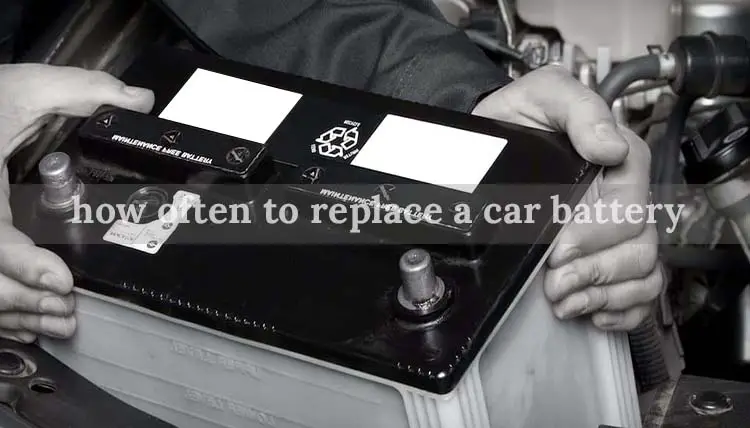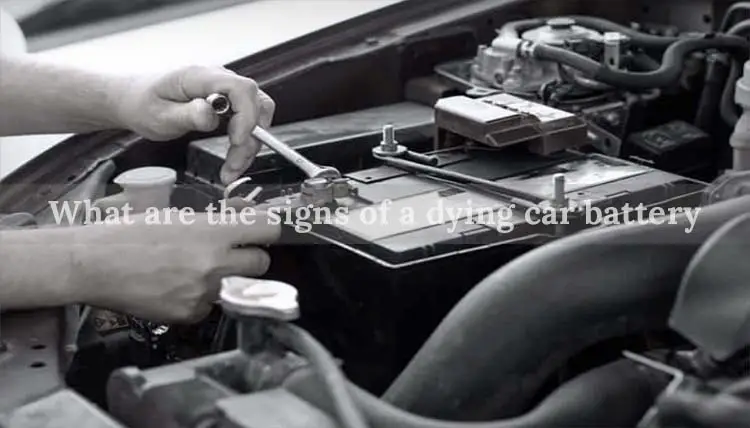As eco-conscious drivers seek alternatives, the question arises: “Can I use a lithium-ion battery in my car?” Unpack the potential of lithium-ion technology with us as we explore its benefits, drawbacks, and compatibility with different car models. From debunking safety myths to addressing environmental impact, embark on a journey to discover whether lithium-ion batteries are the future of your vehicle’s power. Charge ahead with informed decisions in this electrifying exploration of automotive energy solutions.

Lithium-Ion Battery Technology
Lithium-ion batteries, the powerhouse behind modern portable electronics and electric vehicles, operate on a fascinating principle. These batteries use lithium ions to shuttle between the anode and cathode during charging and discharging cycles. This movement generates electrical energy, powering your devices or vehicle. Their exceptional energy density sets lithium-ion batteries apart, allowing for longer-lasting and more efficient power storage.
The automotive industry has undergone a transformative journey in battery technology. Traditional car batteries, predominantly lead-acid, have powered vehicles for decades. However, the pressing need for eco-friendly solutions prompted a significant shift towards alternative energy sources. Lithium-ion batteries emerged as a frontrunner in this evolution, offering enhanced energy efficiency and reduced environmental impact. This transition symbolizes a pivotal moment in the automotive sector as electric and hybrid vehicles equipped with lithium-ion technology redefine the landscape, emphasizing sustainability and innovation.
Pros and Cons of Lithium-Ion Batteries
Pros of Lithium-Ion Batteries
Energy Efficiency: Lithium-ion batteries boast high energy efficiency, delivering more power for longer durations than traditional alternatives. This efficiency contributes to improved overall performance in electric vehicles and electronic devices.
Longer Lifespan: Lithium-ion batteries generally have a longer lifespan than traditional batteries. They can endure more charge-discharge cycles with proper care, making them a durable and sustainable choice.
Lightweight Design: The lightweight nature of lithium-ion batteries enhances their versatility, particularly in the automotive industry. This feature contributes to increased fuel efficiency and better overall vehicle performance.
Cons of Lithium-Ion Batteries
Initial Cost: Lithium-ion batteries offer long-term savings through their extended lifespan, but the initial acquisition cost is higher than traditional options. This upfront investment can be a deterrent for some consumers.
Limited Cold Weather Performance: Lithium-ion batteries may experience reduced efficiency in extremely cold temperatures. This limitation can affect their performance, especially in regions with harsh winter conditions.
Safety Concerns: Although advancements have been made in ensuring the safety of lithium-ion batteries, there is still a potential risk of overheating or fire, albeit rare. Following proper handling and usage guidelines is crucial to mitigate these concerns and ensure safe operation.
Can I use a lithium-ion battery in my car?
Certainly! Yes, you can use a lithium-ion battery in your car. Unlock the potential of efficient energy storage, longer lifespan, and eco-friendly driving. Explore the benefits and considerations for a powerful and sustainable automotive experience.
Overview of Car Models Using Lithium-Ion Batteries
Electric cars, like the Tesla Model S and Nissan Leaf, showcase the exclusive use of lithium-ion batteries to power their electric motors. Hybrid vehicles, exemplified by the Toyota Prius, combine internal combustion engines with lithium-ion batteries for improved fuel efficiency. Notably, an increasing number of recent car models across various manufacturers are incorporating lithium-ion technology, emphasizing the industry’s commitment to sustainable energy solutions.
Retrofitting Conventional Cars
Retrofitting older conventional cars with lithium-ion batteries is a complex but intriguing prospect. Feasibility depends on factors such as the vehicle’s structure, weight distribution, and compatibility with electric systems. Challenges include adapting the charging system, integrating battery management systems, and meeting safety standards. While retrofitting offers a greener alternative for existing vehicles, it requires meticulous planning and expert knowledge. Individuals considering this transformation should carefully weigh the potential benefits against such a conversion’s technical and financial challenges.
Safe Handling and Installation of lithium-ion batteries
When it comes to lithium-ion batteries, safe handling and installation are paramount. To ensure a secure setup, consider these tips:
- Professional Installation: Opt for professional installation services. Experts are well-versed in the nuances of lithium-ion battery systems, minimizing the risk of errors.
- Follow Manufacturer Guidelines: Adhere strictly to the manufacturer’s guidelines for installation. This includes torque specifications, wiring procedures, and safety precautions.
- Avoid Physical Damage: Handle batteries with care to prevent physical damage. Damaged batteries can pose safety hazards, including the risk of thermal runaway.
- Proper Ventilation: Install batteries in well-ventilated areas to dissipate heat effectively. Proper ventilation is crucial for preventing overheating issues.
Common Safety Myths
Dispelling myths surrounding lithium-ion battery safety is crucial for informed decision-making:
Lithium-ion batteries Always Catch Fire
While incidents are rare, they can occur due to mishandling or manufacturing defects. Following safety guidelines minimizes this risk significantly.
All Lithium-Ion Batteries Are the Same
Variations exist in lithium-ion battery chemistries. Different applications require specific types, each with unique characteristics and safety considerations.
Charging Overnight Is Always Dangerous
Modern lithium-ion batteries often have built-in protection mechanisms. However, following manufacturer recommendations and avoiding unnecessary risks is still advisable.
Lithium-ion batteries Are Not Recyclable
Many components of lithium-ion batteries are recyclable. Numerous recycling programs exist to dispose of or repurpose these batteries properly.
Environmental Impact of Lithium-Ion Batteries
Lithium-ion batteries have emerged as a promising solution with several eco-friendly aspects:
- Reduced Greenhouse Gas Emissions: Lithium-ion batteries, especially when powering electric vehicles, contribute to lower greenhouse gas emissions than traditional internal combustion engine vehicles. This reduction aligns with global efforts to combat climate change and decrease air pollution.
- Resource Efficiency: Lithium-ion batteries are more resource-efficient than their lead-acid counterparts. They have a longer lifespan and require fewer raw materials, reducing the overall environmental footprint associated with battery production and disposal.
- Recyclability: Lithium-ion batteries are increasingly recyclable. Efforts are underway to establish efficient recycling processes, allowing for the recovery of valuable materials and minimizing the environmental impact of battery waste.
Comparison with Traditional Lead-Acid Batteries
In comparing lithium-ion batteries with traditional lead-acid batteries:
Energy Density: Lithium-ion batteries offer higher energy density, providing more energy storage capacity in a smaller, lighter package. This efficiency improves performance and reduces vehicle weight, enhancing overall fuel efficiency.
Toxicity: Lead-acid batteries contain lead, a toxic heavy metal. Improper disposal of lead-acid batteries can result in soil and water pollution. In contrast, lithium-ion batteries typically have fewer toxic materials, contributing to a lower environmental risk.
Lifecycle Considerations: Lithium-ion batteries have a longer lifespan than lead-acid batteries. This longevity reduces the frequency of battery replacements and associated environmental impacts, such as disposing of worn-out batteries.
Maintenance Tips for Lithium-Ion Batteries
Ensuring the longevity and optimal performance of your lithium-ion car battery involves adopting innovative maintenance practices. Consider these essential tips:
- Regular Charging: Ensure your lithium-ion battery stays charged between 20% and 80% of its capacity. Frequent, shallow charge cycles are preferable over deep discharges for battery health.
- Avoid Extreme Temperatures: Lithium-ion batteries are sensitive to extreme temperatures. Avoid exposing your car to excessively hot or cold environments, as extreme temperatures can impact battery efficiency and lifespan.
- Smart Charging Habits: Utilize chargers with the correct voltage and amperage ratings recommended by the manufacturer. Avoid fast charging excessively, as it generates heat that can affect battery longevity.
- Balancing Charge Levels: Periodically balance the charge levels of individual cells in the battery. This helps prevent imbalances that can lead to reduced capacity and uneven wear.
- Regular Software Updates: Keep your vehicle’s software up-to-date. Manufacturers often release updates that optimize battery management systems, improving overall efficiency.
- Avoid Full Discharges: Unlike older battery technologies, lithium-ion batteries don’t benefit from complete discharges. Aim to keep the battery level above 20% whenever possible.
- Store at Moderate Charge Levels: If storing your vehicle for an extended period, maintain the battery charge at around 50%. This prevents both deep discharge and overcharging during storage.
- Use OEM Chargers: Stick to using chargers provided or recommended by the original equipment manufacturer (OEM). Generic chargers may not provide the correct voltage and could impact battery health.
- Monitor Charge Cycles: Keep track of the number of charge cycles your battery undergoes. Lithium-ion batteries have a limited lifespan, and understanding cycle counts helps assess battery health.
- Inspect for Physical Damage: Regularly inspect your battery for physical damage. Any signs of swelling, leaks, or unusual odors should be addressed promptly to prevent safety hazards.
Conclusion
Embark on a powerful journey toward sustainable driving with the question, “Can I use a lithium-ion battery in my car?” Unveiling the marvels of lithium-ion technology, this exploration delves into efficiency, safety, and environmental impact. Whether you’re eyeing an electric vehicle or considering retrofitting, the road to greener, more efficient transportation lies ahead. In this electrifying conclusion, embrace the potential of lithium-ion batteries, propelling your car and the future of eco-conscious driving. Charge up, drive on, and redefine your automotive experience.
See Also:



